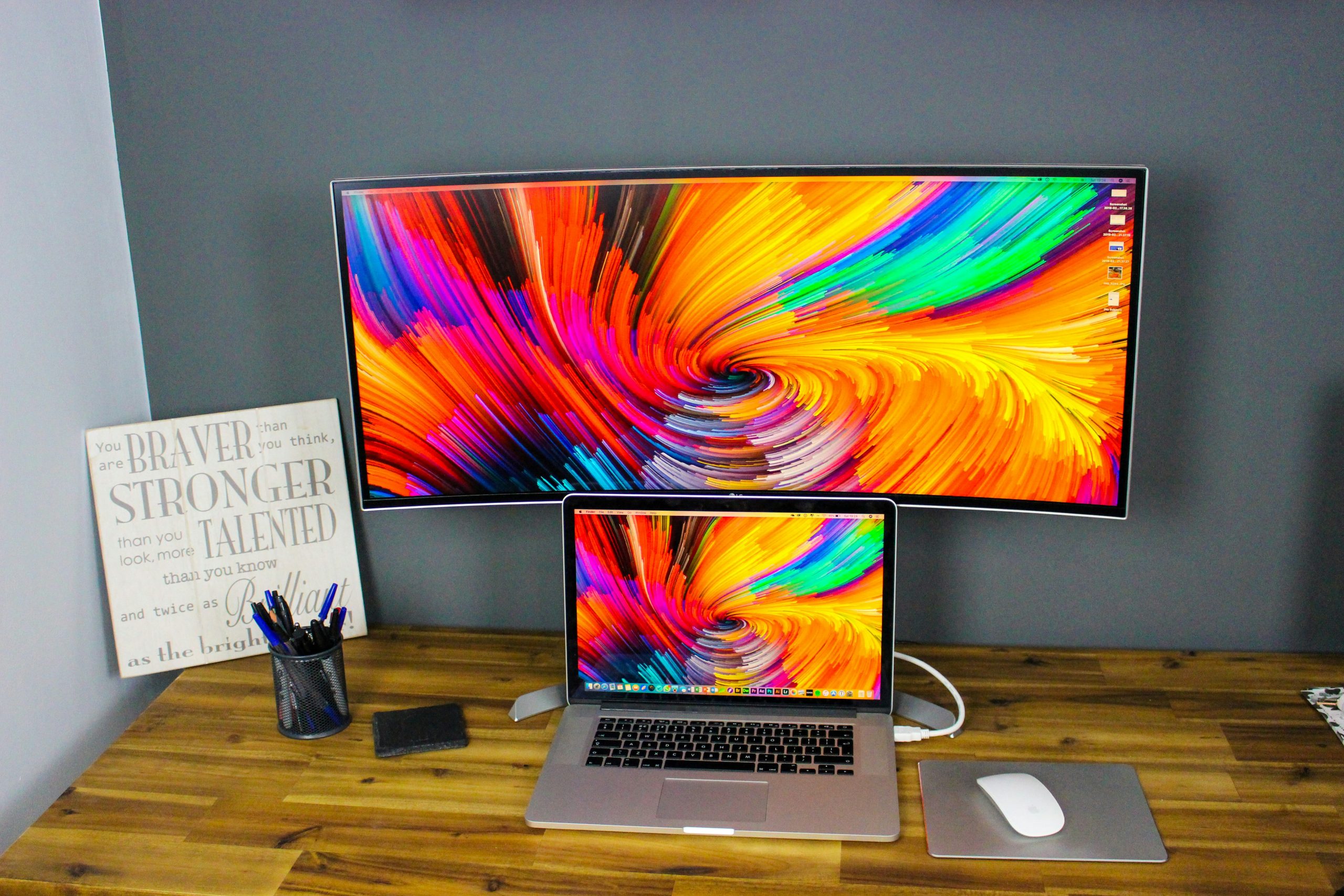Have you ever been engrossed in a thrilling movie or intense gaming session, only to be rudely interrupted by pesky black lines streaking across your monitor? These frustrating interruptions can quickly turn a captivating experience into a headache-inducing ordeal. But fear not, for we are here to shed light on this common issue and provide you with the tools and knowledge to banish those black lines from your screen once and for all.
In this article, we will delve into the mysterious world of black lines on monitors, exploring the various causes behind this nuisance phenomenon. From outdated drivers to faulty hardware, we will unravel the potential culprits lurking behind these annoying visual disturbances. Armed with troubleshooting tips and expert advice, you’ll be equipped with the know-how to tackle this problem head-on and restore your monitor to its pristine glory. Say goodbye to those intrusive black lines and hello to uninterrupted viewing pleasure as we embark on a journey towards fixing this vexing issue together.
Understanding the issue: What causes black lines?
Black lines on a monitor can be caused by a variety of factors, but one common culprit is a hardware issue. These lines may appear due to a malfunctioning graphics card or monitor cables, leading to signal distortion and the display of black lines. Inadequate power supply can also result in this issue, as insufficient power can cause fluctuations in the display output, manifesting as black lines.
Another less obvious cause of black lines could be software-related. Outdated graphics drivers or conflicting software installations may interfere with the proper rendering of images on the screen, leading to the appearance of black lines. It’s essential to regularly update drivers and check for any conflicts within your system that might contribute to this problem. By understanding these various causes, you can take steps towards effectively addressing and ultimately fixing the issue of black lines on your monitor.

Check connection: Ensure all cables are secure
One common cause of black lines on a monitor could be an issue with the connection. To address this, it is crucial to first check all cables and ensure they are securely connected. Loose or damaged cables can lead to signal interruptions, resulting in visual abnormalities on the screen. Taking the time to visually inspect each cable and reseating them as needed can often resolve this issue quickly and effectively.
Additionally, consider using high-quality cables for a more reliable connection. Cheap or older cables may not provide the necessary bandwidth for clear and stable transmission of video signals, leading to potential display problems such as black lines. Investing in good quality cables can prevent future issues and ensure a smoother viewing experience without any distortions on the monitor.
Remember that checking connections should be one of the first steps when troubleshooting any display problem. It is a simple yet essential maintenance task that can save you time and potentially expensive repairs down the line. By being proactive in maintaining your setup, you can enjoy crisp images on your monitor without any distracting black lines disrupting your viewing experience.
Adjust display settings: Resolution, brightness, contrast
When dealing with black lines on your monitor, adjusting the display settings can make a significant difference in resolving this issue. Start by tweaking the resolution settings to ensure that the display is set to its native resolution. This will help maintain the clarity and sharpness of the images on your screen, reducing the appearance of any unwanted lines or distortions.
In addition to resolution, adjusting the brightness and contrast settings can also impact how black lines appear on your monitor. By increasing the brightness, you may be able to make these lines less noticeable, especially in darker areas of the screen. Conversely, tweaking the contrast can help enhance the overall quality of images displayed while potentially minimizing any distracting visual disturbances like black lines.
Remember that finding the right balance between resolution, brightness, and contrast is key to optimizing your display settings for a better viewing experience. Experimenting with these adjustments can not only help address black lines on your monitor but also improve overall image quality and comfort when using your computer. Don’t hesitate to play around with these settings until you find what works best for you!

Update graphics drivers: Latest software version may help
Updating your graphics drivers to the latest software version can often resolve issues with black lines appearing on your monitor. Outdated or corrupted graphics drivers may cause display abnormalities, so keeping them up to date is crucial for optimal performance. By installing the latest updates, you ensure that your system is utilizing the most current technology and bug fixes, which can help eliminate any visual glitches that are disrupting your viewing experience.
Additionally, updating your graphics drivers enables better compatibility with newer software and games, enhancing overall stability and reducing the likelihood of encountering graphical errors. It’s a simple yet effective troubleshooting step that users often overlook when facing display problems. Embracing this proactive approach can not only fix existing issues but also prevent potential issues in the future, ensuring smooth operation of your display system. Remember, staying updated is key to enjoying a seamless and visually pleasing computing experience.
Run diagnostic tests: Software to identify hardware issues
One effective way to identify and troubleshoot hardware issues causing black lines on your monitor is by running diagnostic tests using specialized software. These programs are designed to scan your system, detect any potential hardware problems, and provide detailed reports on the issue at hand. By utilizing these tools, you can quickly pinpoint the root cause of the problem and take appropriate steps to resolve it.
The advantage of using diagnostic software is that it offers a comprehensive analysis of your hardware components, including those that may be causing black lines on your monitor. This in-depth examination can reveal hidden issues that might not be immediately apparent through manual inspection. Additionally, many diagnostic tools come with user-friendly interfaces and step-by-step instructions, making them accessible even for those with limited technical expertise.
Running diagnostic tests is an excellent proactive approach to maintaining the health of your computer system and avoiding potential hardware malfunctions in the future. By regularly checking for any underlying issues using reliable software solutions, you can ensure smooth performance and prevent complications such as black lines appearing on your monitor from disrupting your computing experience.

Repair or replace monitor if necessary
When faced with black lines on your monitor, it’s important to carefully assess whether repair or replacement is necessary. Sometimes, the issue can be resolved through simple troubleshooting steps like adjusting the cable connections or updating the graphics driver. However, if these solutions don’t work and the black lines persist, it may be time to consider replacing the monitor altogether.
Replacing a monitor can provide you with an opportunity to not only fix the current issue but also upgrade your setup to a newer and more advanced model. Additionally, newer monitors often come with improved features such as higher resolutions, faster refresh rates, and better color accuracy. While repair options are available in certain cases, investing in a new monitor might be a more cost-effective and practical solution in the long run.
Conclusion: Troubleshoot and resolve black lines on monitor
In conclusion, troubleshooting and resolving black lines on your monitor can be a frustrating experience but with patience and some basic techniques, you can often find a solution. It’s important to first identify the root cause of the issue, whether it’s a software glitch, loose cable connections or hardware malfunction. By methodically checking each possible cause, you can narrow down the problem and take appropriate action.
One approach is to update your graphics drivers as outdated or corrupted drivers can sometimes cause display issues including black lines. Additionally, adjusting the refresh rate and resolution settings of your monitor may help in alleviating the problem. If these steps don’t resolve the issue, seeking professional help or contacting customer support for further guidance might be necessary to fully troubleshoot and fix the black lines on your monitor.
Remember that each situation is unique so experimentation and persistence are key in finding the right solution for your specific monitor issue. By following these steps and being proactive in troubleshooting, you’ll likely be able to enjoy a clear, crisp display without those pesky black lines interrupting your viewing experience.
